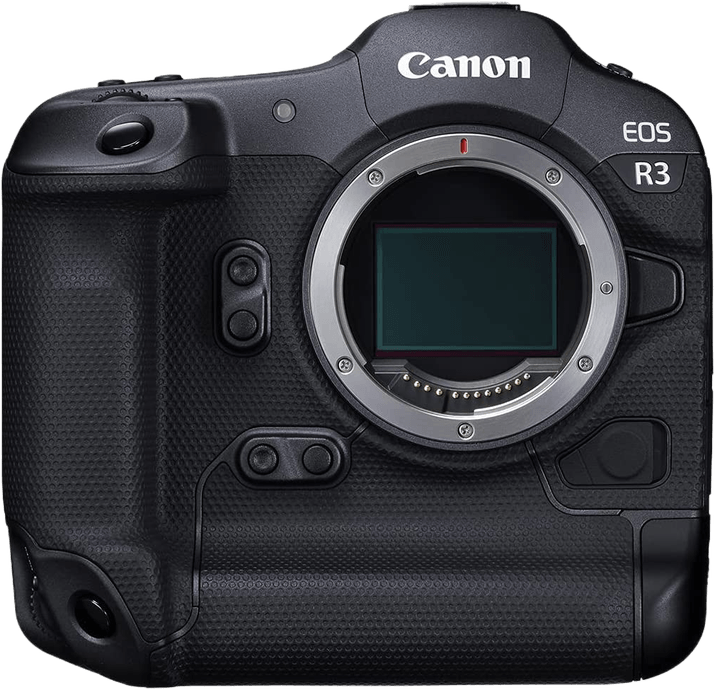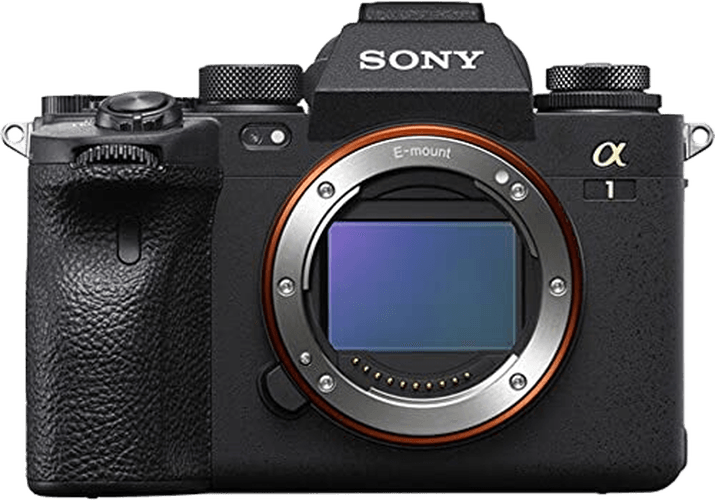Canon EOS R3 vs Sony a1 Comparison
Canon EOS R3

Sony a1

The Sony a1 takes the lead with a score of 86/100, while the Canon EOS R3 follows closely with 84/100. Both cameras are mirrorless and were released in 2021, with the Sony a1 having a higher launch price of $6499 compared to the Canon EOS R3’s $5999.
The Canon EOS R3 stands out due to its larger size (150 x 143 x 87mm) and heavier weight (1015g), which may appeal to those who prefer a more substantial feel. On the other hand, the Sony a1 offers a more compact design (129 x 97 x 81mm) and lighter weight (737g), making it easier to carry and handle for extended periods.
While both cameras excel in their respective areas, the Sony a1’s higher score reflects its overall better performance, making it the top choice for those seeking a high-quality, compact mirrorless camera. The Canon EOS R3, however, remains a strong contender for those who appreciate a more robust build.
Canon EOS R3 vs Sony a1 Overview and Optics
The Sony a1 takes the lead in our optics comparison with a score of 89/100, while the Canon EOS R3 trails behind with a score of 84/100. Both cameras share some common specifications, including a full-frame CMOS sensor, 30 fps shooting speed, and image stabilization. Additionally, they both utilize their respective company’s lens mounts: Canon RF for the EOS R3 and Sony FE for the a1.
The Sony a1 outperforms the Canon EOS R3 in several aspects. With an impressive 50.1-megapixel resolution, the a1 captures more detail and offers higher image quality than the 24-megapixel EOS R3. The a1 also boasts a higher DXOMARK sensor score of 98, compared to the EOS R3’s 96. This difference reflects the a1’s superior image quality, dynamic range, and low-light performance.
On the other hand, the Canon EOS R3 has its advantages as well. Its Digic X processor is known for its speed and efficiency, which can contribute to faster autofocus and processing times. Although the Sony a1 features a powerful Dual Bionz XR processor, some users may prefer the Canon’s processing capabilities depending on their shooting needs.
Both cameras excel in their optics, but the Sony a1 emerges as the winner due to its higher resolution and superior sensor performance. The Canon EOS R3, however, remains a strong contender with its reliable processor. Ultimately, the choice between these two cameras depends on the specific needs and preferences of the photographer, as both offer outstanding optical performance.
Canon EOS R3 vs Sony a1 Video Performance
The Canon EOS R3 outperforms the Sony a1 in video capabilities, scoring 96 out of 100 compared to the Sony a1’s score of 86. Both cameras share some common specifications, such as a maximum video frame rate of 120fps. However, there are key differences that set them apart.
The Canon EOS R3 offers a maximum video resolution of 6K with dimensions of 6000 x 3164, providing excellent detail and quality in video recording. Additionally, the EOS R3 has built-in time-lapse functionality, making it convenient for users who want to capture stunning time-lapse sequences without requiring additional equipment or software.
On the other hand, the Sony a1 boasts an impressive maximum video resolution of 8K with dimensions of 7680 x 4320. This higher resolution allows for even greater detail and clarity in videos. However, the a1 does not have built-in time-lapse functionality, which may limit its appeal for some users.
Despite the higher video resolution in the Sony a1, the Canon EOS R3’s overall video performance is superior, as reflected in its higher video score. The built-in time-lapse functionality in the EOS R3 is a significant advantage and contributes to its higher score. The Sony a1, although offering greater video resolution, may not be as versatile for users who require time-lapse capabilities.
Therefore, the Canon EOS R3 is the better choice for users who prioritize video performance and versatility, while the Sony a1 is more suitable for those who value higher video resolution but can forego built-in time-lapse functionality.
Canon EOS R3 vs Sony a1 Features and Benefits
The Canon EOS R3 wins the features comparison with a score of 87/100, while the Sony a1 scores 83/100. Both cameras share several specifications, including a touchscreen, flip screen, WIFI, and Bluetooth capabilities.
The Canon EOS R3 outperforms the Sony a1 in screen size and resolution. With a 3.2-inch screen and a resolution of 4,150,000 dots, the EOS R3 provides a clearer and larger display for users. This advantage allows for better image review and easier menu navigation. Additionally, the EOS R3 has GPS functionality, which the Sony a1 lacks. This feature enables photographers to geotag their images, making it easier to organize and locate photos based on location data.
On the other hand, the Sony a1 has a slightly smaller 3-inch screen with a lower resolution of 1,440,000 dots. Although this difference may not significantly impact the user experience, it is worth noting. The absence of GPS in the Sony a1 is a drawback for some photographers who value geotagging capabilities.
Despite these differences, both the Canon EOS R3 and the Sony a1 are feature-rich cameras that cater to various photography needs. The EOS R3’s larger screen, higher resolution, and GPS functionality make it the winner in this comparison. However, the Sony a1 remains a strong contender with its touchscreen, flip screen, WIFI, and Bluetooth features. Users should consider their specific needs and preferences when choosing between these two cameras, as both offer impressive capabilities.
Canon EOS R3 vs Sony a1 Storage and Battery
The Canon EOS R3 outperforms the Sony a1 in storage and battery with a score of 81/100, compared to the Sony a1’s 73/100. Both cameras have two memory card slots and support USB charging. However, the Canon EOS R3 accepts both SD/SDHC/SDXC and CFexpress Type B (UHS-II compatible) memory cards, giving users more flexibility in storage options. Additionally, the Canon EOS R3’s LP-E19 battery provides 760 shots per charge, which is significantly more than the Sony a1’s NP-FZ100 battery that offers 530 shots.
The Sony a1 has its advantages, utilizing SD and CFexpress Type A (UHS-II compatible) memory cards. While this provides a decent range of storage options, it falls short of the Canon EOS R3’s offerings.
Taking into account the differences in storage options and battery life, the Canon EOS R3 is the superior choice for photographers seeking greater flexibility and longer shooting times. The Sony a1 remains a strong competitor, but its storage and battery capabilities do not quite match those of the Canon EOS R3.
Canon EOS R3 vs Sony a1 Alternatives
Still not sure which camera is best for you? Check out some more popular camera comparisons for inspiration:
